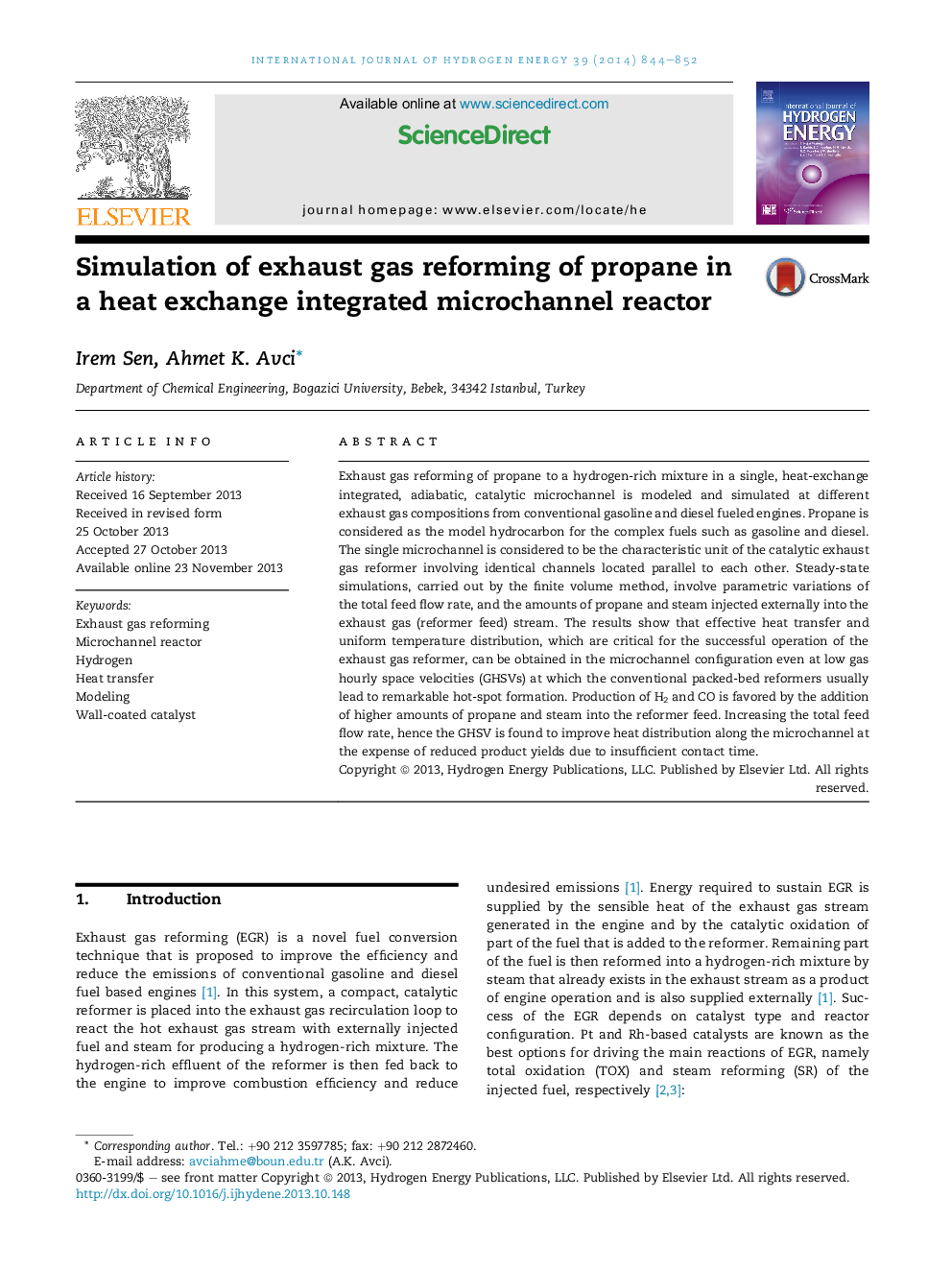| کد مقاله | کد نشریه | سال انتشار | مقاله انگلیسی | نسخه تمام متن |
|---|---|---|---|---|
| 1276529 | 1497507 | 2014 | 9 صفحه PDF | دانلود رایگان |
• Exhaust gas reforming of propane is simulated in a catalytic microchannel reactor.
• Microchannel configuration enabled effective heat transfer along the reactor.
• Hot-spot free operation is demonstrated even at low GHSV values.
• H2 production is favored by injecting more propane and steam into the feed.
• Higher GHSV values improved axial heat distribution, but dampened H2 production.
Exhaust gas reforming of propane to a hydrogen-rich mixture in a single, heat-exchange integrated, adiabatic, catalytic microchannel is modeled and simulated at different exhaust gas compositions from conventional gasoline and diesel fueled engines. Propane is considered as the model hydrocarbon for the complex fuels such as gasoline and diesel. The single microchannel is considered to be the characteristic unit of the catalytic exhaust gas reformer involving identical channels located parallel to each other. Steady-state simulations, carried out by the finite volume method, involve parametric variations of the total feed flow rate, and the amounts of propane and steam injected externally into the exhaust gas (reformer feed) stream. The results show that effective heat transfer and uniform temperature distribution, which are critical for the successful operation of the exhaust gas reformer, can be obtained in the microchannel configuration even at low gas hourly space velocities (GHSVs) at which the conventional packed-bed reformers usually lead to remarkable hot-spot formation. Production of H2 and CO is favored by the addition of higher amounts of propane and steam into the reformer feed. Increasing the total feed flow rate, hence the GHSV is found to improve heat distribution along the microchannel at the expense of reduced product yields due to insufficient contact time.
Journal: International Journal of Hydrogen Energy - Volume 39, Issue 2, 13 January 2014, Pages 844–852
